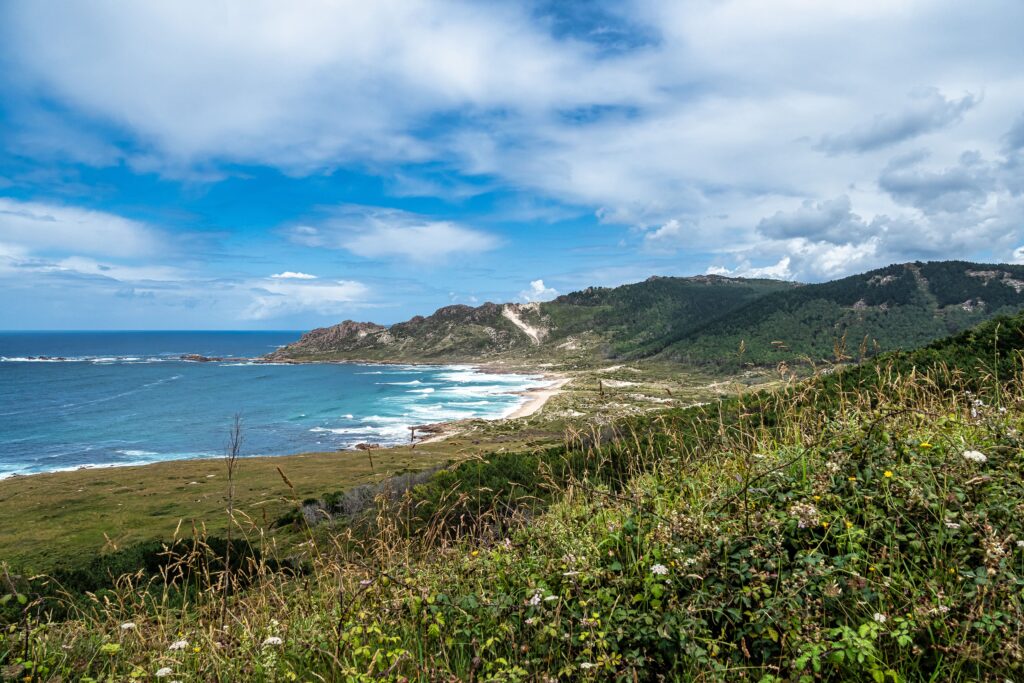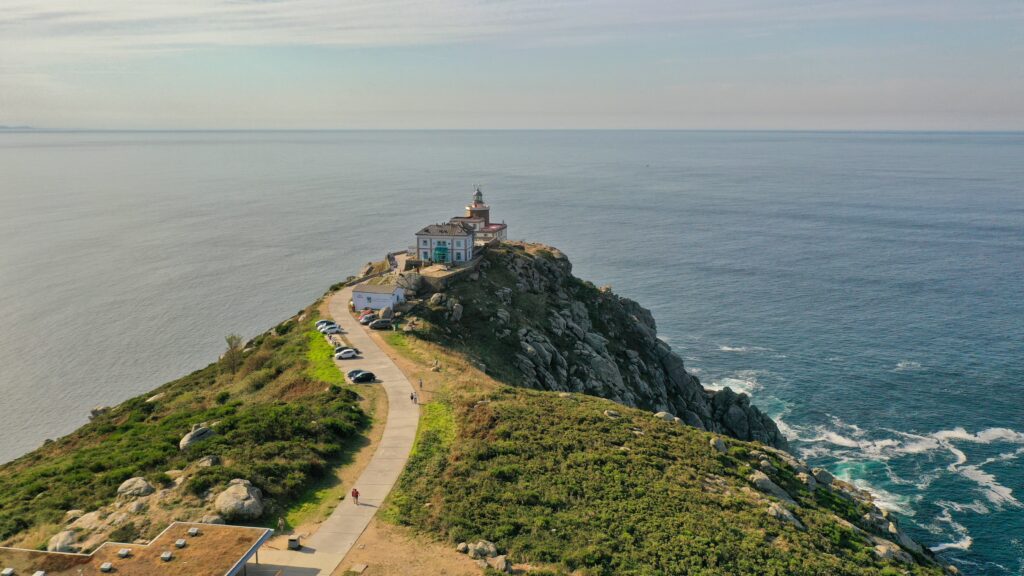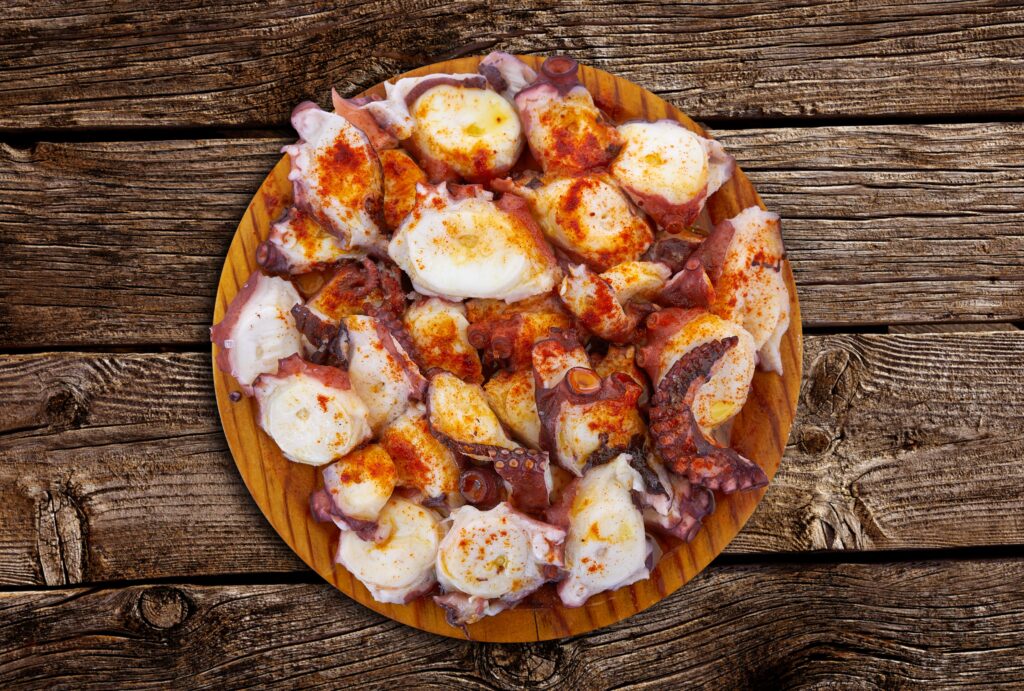- Bree Recker
If you enjoy incredible food and breathtaking coastline, you should already plan your trip to Galicia. But just where is Galicia? Galicia, Spain, is right above Portugal, in the top-right corner of the Iberian Peninsula.
Spain’s farthest northwest region has an unmatched culinary culture, incredible wines, kind people, and spectacular sites. And while visitors to Galicia are familiar with the Camino de Santiago, we’re staying all the way out on the Atlantic coast for our ideal trip in Galicia. So pack your bags, and be sure to bring an umbrella. Galicia is one of Spain’s rainiest regions, but there are still plenty of ways to enjoy its unmatched beauty and great food.
Join us in exploring Galicia's allure, a journey of culture, cuisine, and coastal charm awaits!
PONTEVEDRA & RIAS BAIXAS
We’ll start our trip near Pontevedra and make our way up the coast. One of our favorite towns in this area is Combarro, one of Galicia’s most beautiful fishing villages. Combarro is located within the Rías Baixas region, which comprises four estuaries and corresponding inlets. The Rías Baixas inlets are a renowned D.O. wine region famous for its white Albariño variety.
Aside from setting up a wine tasting, there are plenty of other things to do on the Rías Baixas inlets, including visiting the Castro de Baroña, an ancient fortified settlement that dates back to the Iron Age.

You should also visit the Dunas de Corrubedo Natural Park. Located on the Atlantic coast, it’s the perfect place to bird-watch and explore the largest dune in Galicia.
Finally, you can’t leave Pontevedra without heading to the Mirador y Cascada de Ézaro, the only river in continental Europe that flows into the sea as a waterfall. As you can probably imagine, this truly is a remarkable sight.
GALICIA'S NICEST ISLANDS
The Rías Baixas region is also dotted with beautiful islands thanks to its coastal location. To start, visit Illa de Arousa, connected to the mainland via the island’s only bridge (which is, in fact, one of the longest in Europe). You’ll find several ports to explore on the island and a handful of picturesque beaches.
Next, visit Illa da Toxa, a tiny island with less than 100 residents that is reachable via a century-old bridge. One of the typical things to do on the island is to visit a spa and dip in a thermal bath (legend has it that the island’s waters are healing). You should also take a stroll down the island’s promenade and visit Capilla de las Conchas, a little chapel whose facade is covered with thousands of conchas (seashells).

Don’t leave without visiting one of our favorite islands in the Rías Baixas are, the Illas Cíes. This archipelago of three islands is a protected national park, home to Praia de Rodas, which The Guardian has dubbed as “the most beautiful beach in the world.” You can reach the Illas Cíes via ferry or private boat.
THE COSTA DA MORTE
If we head up the coast, we’ll leave the Rías Baixas inlets and enter Galicia’s Costa da Morte region. This wild coast, shrouded in mystery, gets its name for being the maritime stretch that historically had some of the highest numbers of documented shipwrecks in the world.
This region was the location of the worst environmental crisis in the history of Spain: The 2002 Prestige. When this oil tanker sunk, it released some of its 77,000 tons of petroleum into the surrounding waters. But nowadays, the Costa da Morte is a stretch of virgin coastline that boasts some of Spain’s most well-preserved natural areas. For example, the shoreline between the town of Arou and Cabo Vilán has some of the most authentic untouched beaches and natural regions in Galicia.

The Praia do Trece is a unique beach nestled among rugged rocks and lush greenery. Also, visit the nearby Cemiterio dos Ingleses, a cemetery dedicated to the 172 victims of the English vessel The Serpent, shipwrecked at the end of the 19th century. But one of our favorite towns on the Costa da Morte is Laxe, one of the most beautiful pueblos on the coast. Its privileged orientation, as the Cabanas Bay area shelters it, means that it is often protected from the harsh winds of the Atlantic. It is home to some 3,000 residents and has one of the best urban beaches in Galicia.
Finally, nestled between Arou and Laxe, you’ll find the Casa do Alemán de Camelle. This curious landmark, essentially an outdoor workshop and collection of natural sculptures, was created by a German artist who moved to the town of Camelle in the 1960s.
GALCIA'S BEST LIGHTHOUSES & MEALS
A visit to the Galician coast isn’t complete without visiting some lighthouses and trying the region’s typical cuisine. Moving up the coast, you can start at Faro de Fisterra, an active lighthouse built during the mid-19th century.
Fisterra, or Finisterre, was considered the end of the world by the Romans. Look at the word’s etymology: finis (end) + terre (earth). Finisterre also serves as the ending point of the Camino de Santiago, and visiting this stunning town and its lighthouse will truly give you the sense of being at the ends of the earth.
Next, head up to Faro Touriñán, located at the tip of a breathtaking cape. Next, check out Faro de Vilán, Spain’s first electric lighthouse, before heading to Faro do Roncudo, a remote lighthouse built over 100 years ago.

We can only send you to Galicia if we tell you what and where to eat! If you look at a map of Galicia, Spain, you’ll see that both the Rías Baixas and the Costa da Morte line the Atlantic coast, meaning that it is one of the perfect regions in Spain for quality seafood. Plus, the restaurants in Galicia give you some of the best quantity and quality-to-price ratios in all of Spain. A typical meal in this region is characterized by lots of delicious, locally sourced food, which won’t break the bank.
Our first recommendation is to try some typical pulpo, a feira, or a Galician-style octopus (it is boiled, served over potatoes, drizzled with olive oil, and sprinkled with paprika). You also have to try the empanada gallega, which can be filled with a variety of seafood or meat. And speaking of seafood, you’ll taste some of the most delicious shellfish and mollusks in this coastal region.

As you can read, a trip to Galicia certainly will be different from the touristy experience in Madrid or Barcelona. You’ll visit a pristine area marked by its natural beauty, rugged coast, awe-inspiring islands, and rich culinary offering.
So if you need help with where to go on your next Spanish vacation, now you know. Plan a trip to Galicia and enjoy the untouched coastline, delicious dishes, and some of the most spectacular sights you could imagine.

